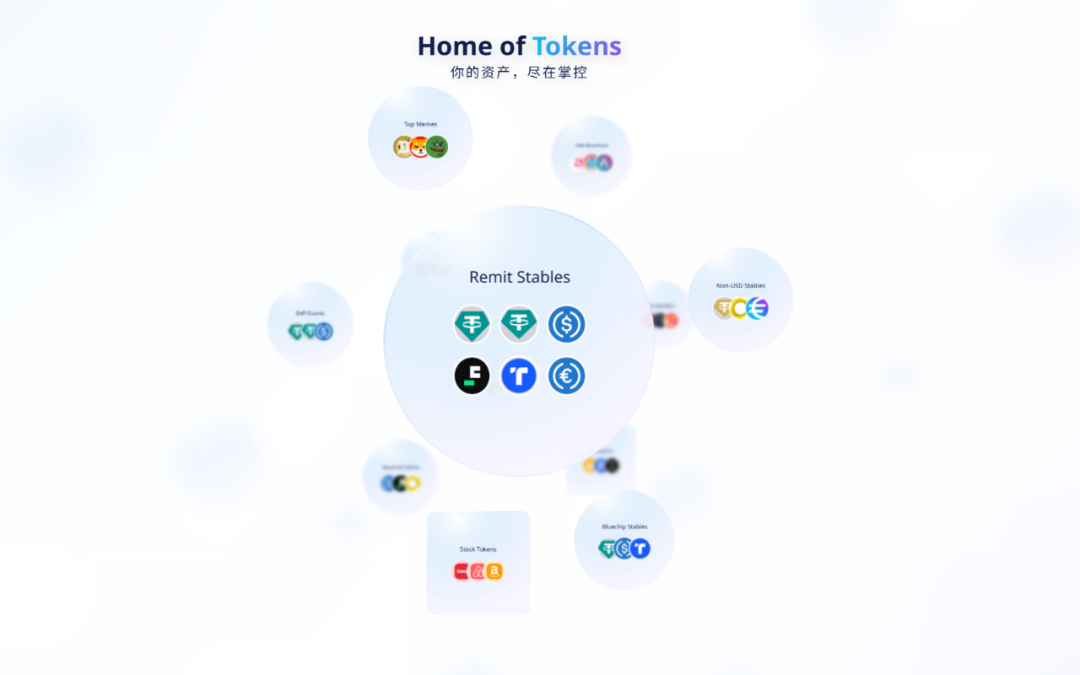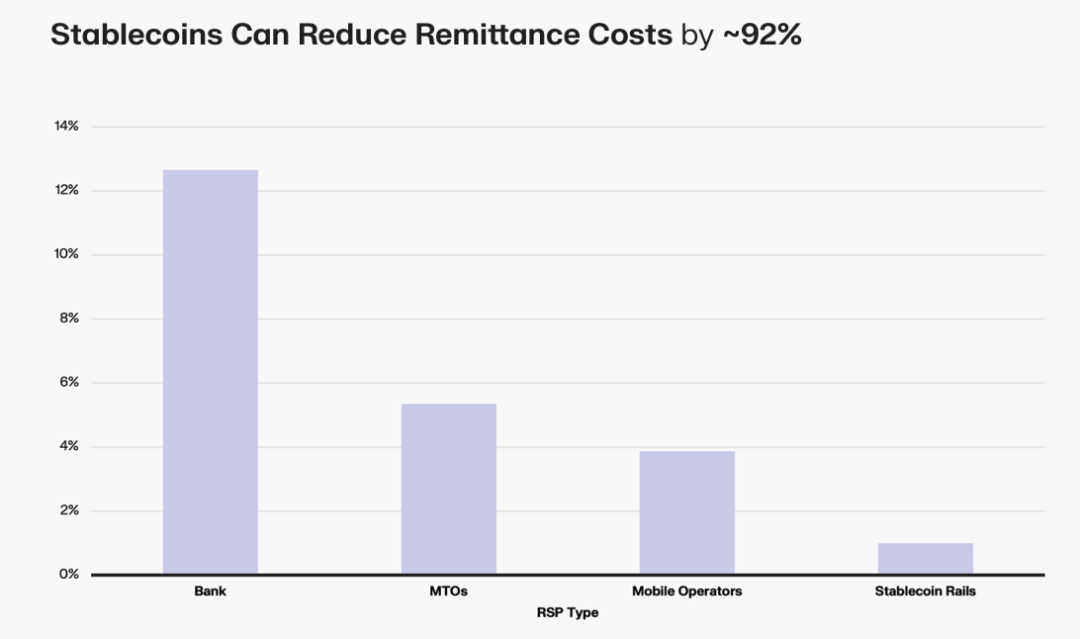Stablecoins are becoming the "new dollar" for global small and micro traders in cross-border payments.
Written by: imToken
Yiwu, USDT—these two seemingly unrelated terms are now being placed in the same context.
As the "world's capital of small commodities," Yiwu merchants used to sell products to the Middle East, Latin America, and Africa, often needing to go through layers of intermediary banks for transfers. This process not only took a long time and incurred high costs but also often faced the risk of fund retention.
However, in recent years, the situation has been quietly changing. According to a research report by Huatai Securities, stablecoins have become one of the important tools for cross-border payments in Yiwu. Buyers only need to complete the transfer on their mobile phones, and the funds can arrive within minutes. Chainalysis even estimates that as early as 2023, the on-chain stablecoin flow in the Yiwu market has exceeded $10 billion.

Although a follow-up survey by the 21st Century Business Herald pointed out that most Yiwu merchants have not heard of or do not understand stablecoins, and only a few merchants support stablecoin payments, this precisely indicates that it is still in the early stages but already shows signs of diffusion.
In other words, stablecoins are becoming the "new dollar" for global small and micro traders in cross-border payments—payment is not only the starting point for stablecoins but also the most direct entry point for them into the global financial system.
01 From "Payment" to "Global Payment"
Stablecoins have diversified in application scenarios: some use them for DeFi mining, some earn interest, and others use them as collateral assets. But behind these uses, payment remains the core function.
Especially in the "global payment" scenario of cross-border payments, it starkly contrasts with traditional finance.
It is well known that for a long time, the SWIFT system has been the core pillar of cross-border transactions. However, under modern financial demands, its inefficiency has become unsustainable—cross-border remittances often go through multiple intermediary banks, with cumbersome procedures and slow settlements, which can take several days to complete. During this time, the layered fees keep transaction costs high.
For cash flow-dependent businesses or individuals needing to remit money home, these delays and costs are almost unbearable. In simple terms, although SWIFT still has global influence, it was not designed for the high efficiency demands of the digital economy.

In this context, stablecoins provide a fast, low-cost, and borderless alternative. They inherently possess low-cost, borderless, and real-time arrival attributes. A cross-border transfer can be completed in just a few minutes without layers of intermediaries, and fees are significantly reduced due to network differences.
For example, the transfer costs of mainstream stablecoins like USDT/USDC on Ethereum L2 networks have already dropped to a few cents per transaction, making them almost negligible. This makes stablecoins a natural viable solution for "global payments," especially in regions like Southeast Asia and Latin America, where cross-border funds are active and traditional channels are not smooth, gradually becoming the mainstream choice for small payments.
More importantly, for underdeveloped or economically unstable countries, stablecoins are not just "payment tools"; they also serve as a short-term store of value—holding stablecoins means more stable purchasing power protection for users facing the risk of local currency depreciation.
This dual role of "payment + risk hedging" is precisely why "global payment stablecoins" deserve to be discussed separately.

Source: imToken Web (web.token.im) "Global Payment" (remittance-type) stablecoins
From imToken's perspective, stablecoins are no longer a tool that can be summarized by a single narrative; they are a multidimensional "asset collective"—different users and different needs correspond to different stablecoin choices.
In this classification, "global payment stablecoins" (USDT, USDC, FDUSD, TUSD, EURC, etc.) are specifically aimed at cross-border transfers and value circulation. Their roles are becoming increasingly clear: they are both a fast lane for global capital flow and a "new dollar" for users in turbulent markets.
02 Why Global Systems Cannot Ignore Stablecoins?
If "payment" is the original intention of stablecoins, then "global payment" is their most competitive landing scenario. The reason is simple: stablecoins almost naturally fit the three major pain points of cross-border payments—cost, efficiency, and acceptability.
First, for payment scenarios, cost and efficiency are core.
As mentioned above, traditional cross-border remittances often require going through multiple intermediary banks, with time measured in "days" and costs often reaching dozens of dollars. In contrast, the advantages of stablecoins are clear; the transaction fees for a single transfer on Ethereum L2 networks are usually well below $1, making them a common tool for cross-border small payments in Southeast Asia and Latin America.
According to a Keyrock report, the cost of traditional bank cross-border remittances for $200 is about 12.66%, MTOs (money transfer operators) about 5.35%, and mobile operators about 3.87%. In contrast, stablecoin platforms can reduce similar transfer costs to below 1%, significantly improving capital flow efficiency. A stablecoin transfer on the Ethereum mainnet usually only requires a few seconds for confirmation, and on some L2 or emerging public chains, even shorter settlement times can be achieved. This experience is not on the same level as the T+N of the SWIFT system.

Secondly, in addition to efficiency and cost, whether a payment can be widely adopted also depends on whether the other party is willing to accept it.
This is thanks to the mutual support between the crypto market and stablecoins over the years—USDT, as the largest stablecoin globally, has long maintained a market value in the hundreds of billions, making it the most widely accepted payment medium. USDC, due to its compliance and transparency, is favored by institutions and has a high penetration in the European and American financial systems.
With continued penetration, in countries like Turkey, Argentina, and Nigeria, where local currencies have depreciated severely, USDT has almost become a de facto "savings currency"; USDC attracts institutions with transparent reserves and compliance, achieving high penetration in European and American markets; although EURC is smaller in scale, it plays an irreplaceable role in cross-border settlements in Europe.
Finally, for payments, speed and cost are important, but "is the capital really safe?" is even more critical.
With the implementation of the U.S. "GENIUS Act," the Hong Kong "Stablecoin Regulation," and the successive pilot programs in markets like Japan and South Korea, compliant issuance has gradually become the "pass" for stablecoins.
In the future, stablecoins that can enter the global payment system will likely be "whitelist players" on the path to compliance.
In summary, the reason stablecoins are becoming the infrastructure for "global payments" is not coincidental; it is because they have a comprehensive alternative advantage over traditional cross-border payments in terms of efficiency, cost, acceptability, and transparency.
03 Payment is the Starting Point, and a Greater Future
For this reason, for stablecoins that are gradually expanding their "global payment" attributes, what they face is far beyond just the trading needs of crypto-native users; it extends to a broader group:
Individuals and businesses with cross-border remittance or payment needs;
Crypto traders needing to quickly transfer funds between different exchanges;
Users facing local currency depreciation, seeking to hedge with stable assets like dollars or euros;
From this perspective, "global payment" is both the original intention of stablecoins and their most realistic and urgent landing scenario—they are not trying to overthrow the traditional banking system but rather provide a more efficient, lower-cost, and more inclusive supplementary solution, transforming what used to require multiple intermediary banks and take days to settle into an action that can be completed in "a few minutes + a few cents."
The future trend is becoming increasingly clear. With the implementation of the U.S. "GENIUS Act," the effectiveness of the Hong Kong "Stablecoin Regulation," and the successive initiation of pilot programs in markets like Japan and South Korea, whether for cross-border payments, corporate treasury, or personal hedging, global payment stablecoins will become an indispensable part of the financial system.
When we look back at the experimental attempts of Yiwu merchants to receive USDT, we may find that this is not just the story of a city but a global microcosm—stablecoins are moving from the margins to the mainstream, from on-chain to reality, ultimately becoming the new infrastructure for global value flow.
From this perspective, payment is the starting point for stablecoins and also their greater future in becoming part of the global financial infrastructure.
免责声明:本文章仅代表作者个人观点,不代表本平台的立场和观点。本文章仅供信息分享,不构成对任何人的任何投资建议。用户与作者之间的任何争议,与本平台无关。如网页中刊载的文章或图片涉及侵权,请提供相关的权利证明和身份证明发送邮件到support@aicoin.com,本平台相关工作人员将会进行核查。




